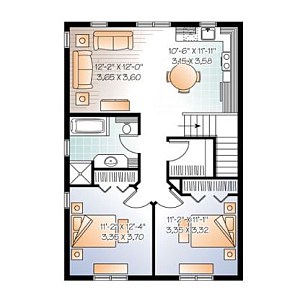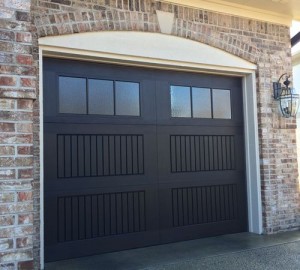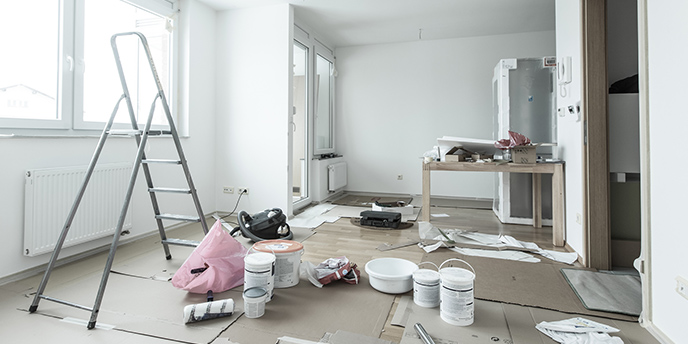
You may want to convert your garage into an exercise room. It can not only save you money but also adds a unique touch and style to your home.
Getting started
It is important to decide which type of equipment you need. You can go with a simple pull up bar or squat rail, but it's worth considering adding a weight-bearing bench and a power pressing machine. You want equipment that is easily accessible and that doesn't take too much space.
Once you have a clear idea of the items you want to purchase, make a plan about how you will use the space. You will be more efficient in your gym and avoid any mistakes that could make it less effective.
Beautiful flooring
Use colorful flooring to make your garage gym more interesting and attractive. Vinyl flooring or resin floor tiles are ideal, and you can choose from a range of colors to suit your taste.

Garage ceiling insulation
Insulation is essential for garage gyms as it will keep the room cool and comfortable. Insulation not only lowers your energy bills but will also make your gym more enjoyable to work in.
It won't only block air flow but it will also reduce humidity. It will also help maintain the garage temperature.
You can either do it yourself, or hire someone to do it. You will reap the benefits in the long term, no matter what.
Clearing out the garage
Before you place any gym equipment into your garage, you need to clean it out. This will not only give your garage a fresh start but also save you time and make it safe for your family.
Whatever type of garage gymnasium you build, it is essential that there is a space that is clean and clear for your training. This will enable you to concentrate on your technique and form, and prevent injuries.

If you don't have a lot of money to spend on your gym, consider getting equipment secondhand or from a friend. There are many deals available for equipment that is used but still in great condition.
Garage music system
Music is a wonderful addition to your gym. It can encourage you to exercise more and can even make the experience more fun. A Bluetooth speaker is sufficient, but larger sound systems are also available.
FAQ
What is the difference between a remodel and a renovation?
Remodeling is any major transformation of a room or portion of a bedroom. A renovation is minor changes to a room, or a portion of a bedroom. A bathroom remodel, for example, is a major undertaking, while a new sink faucet is minor.
Remodeling involves replacing a complete room or a part of a entire room. Renovating a room is simply changing one aspect of it. For example, a kitchen remodel involves replacing counters, sinks, appliances, lighting, paint colors, and other accessories. You could also update your kitchen by painting the walls, or installing new light fixtures.
How can you tell if your house needs renovations or a remodel?
First, check to see whether your home was updated in recent years. You might want to renovate if you haven’t had any home updates in several years. If your home appears brand-new, you might consider a renovation.
The second thing you should check is whether your home is in good condition. If there are holes in the drywall, peeling wallpaper, or broken tiles, it's likely time for a renovation. It's possible to remodel your home if it looks good.
A second factor to consider is your home's general condition. Does it have a sound structure? Are the rooms well-lit? Are the floors in good condition? These are essential questions to consider when choosing the type of remodeling you want.
What should you do with your cabinets?
It all depends on if you are thinking of selling or renting your home. If you're planning to sell, you'll probably want to remove and refinish the cabinets. This gives buyers a feeling of newness and allows them to visualize their kitchens when they move in.
But if your goal is to rent your house you will need to remove the cabinets. Tenants often complain about having to clean up dishes and fingerprints from previous tenants.
To make the cabinets look better, you can paint them. Use a high-quality primer. Low-quality paints can become brittle over time.
What are the main components of a full kitchen renovation?
A complete kitchen renovation involves more than simply replacing the sink and faucet. There are also cabinets, countertops, appliances, lighting fixtures, flooring, plumbing fixtures, and much more.
Full kitchen remodels allow homeowners to modernize their kitchens without the need for major construction. This means that no demolition is required, making the project easier for both the homeowner and the contractor.
There are many services that can be done to your kitchen, including plumbing, electrical, HVAC, painting, and carpentry. A complete kitchen remodeling project may require multiple contractors depending on the size of the job.
It is best to work with professionals who have experience in kitchen remodeling. Many moving parts can cause delays in kitchen remodels. DIY projects can cause delays so make sure you have a backup plan.
Is $30000 sufficient for a kitchen remodeling project?
Depending on your budget, a kitchen renovation could cost you anywhere from $15000 to $35000. If you want a complete kitchen overhaul, expect to pay more than $20,000. You can get a complete kitchen overhaul for as little as $3000 if you just want to replace the countertops or update your appliances.
An average cost for a complete renovation is between $12,000-$25,000. However, there are ways to save without sacrificing quality. A new sink can be installed instead of replacing an older one. This will cost you approximately $1000. You can even buy used appliances for half of the price of new.
Kitchen renovations are more time-consuming than other types of projects. Plan accordingly. You don't want your kitchen to be finished halfway through.
Start early. Start by looking at different options and getting quotes from contractors. Next, narrow your options based on price and availability.
Once you've found a few potential contractors, ask for estimates and compare prices. Not always the best choice is the lowest-priced bid. It is important to find someone with the same work experience as you who will provide a detailed estimate.
Remember to include all the extras when calculating the final cost. These may include labor or material charges, permits and so forth. Be realistic about how much you can afford and stick with your budget.
Tell the contractor if you don't like any of the bids. You can tell the contractor why the first quote isn't what you want and get another one. Don't let your pride prevent you from saving money.
Why should I remodel rather than buying a completely new house?
Although houses are getting cheaper each year, you still have to pay the same amount for the same square footage. You may get more bang for your buck but you still have to pay for extra square footage.
It is less expensive to maintain a house that does not require much maintenance.
Remodeling can save you thousands over buying a new house.
Remodeling your current home can help you create a unique space that suits the way you live. You can make your home more comfortable for you and your family.
Statistics
- According to a survey of renovations in the top 50 U.S. metro cities by Houzz, people spend $15,000 on average per renovation project. (rocketmortgage.com)
- Following the effects of COVID-19, homeowners spent 48% less on their renovation costs than before the pandemic 1 2 (rocketmortgage.com)
- $320,976Additional home value: $152,996Return on investment: 48%Mid-range average cost: $156,741Additional home value: $85,672Return on investment: (rocketmortgage.com)
- Attic or basement 10 – 15% (rocketmortgage.com)
- 57%Low-end average cost: $26,214Additional home value: $18,927Return on investment: (rocketmortgage.com)
External Links
How To
How do you plan a bathroom on a budget?
It is important to be able to afford any remodeling project. It is impossible to expect to pay it off later if it is not possible for you now.
You need to be able to budget and plan for bathroom remodeling. A bathroom remodeling project is quite expensive, and several factors contribute to its cost.
Labor is one of the largest expenses. Labor costs vary depending on the size of the job and whether you hire a professional contractor or a DIYer. Professional contractors usually charge more per hour than a DIYer because they have experience and expertise.
Materials are another large expense. Prices per square foot can vary depending upon the type of material.
The final factor is the cost for energy. This includes both gas and electricity bills. Peak demand periods are when energy costs can rise.
The time taken to complete the project is another factor to consider. Bathroom renovations require patience and a lot of time. While some projects can be completed in weeks, others can take up to months.
Other than these three main categories, smaller items such paint, wallpaper, and flooring can add to the project’s overall cost.
Here are some tips that will help you make the right decision about how to approach your bathroom remodeling job.
-
Determine your budget - Before beginning any remodeling project you need to know what you can afford. It doesn't make a difference if you have the money or not. It's important to create a realistic budget that allows you to see exactly where your financial situation is.
-
Plan ahead - When possible, schedule your bathroom remodel during the off-season. You'll be able to save money heating and cooling your home in the winter months due to lower energy usage. It is possible to schedule your remodel at night, when the majority of people use the bathroom.
-
Look around - After you have established your budget, it is time to start looking for vendors. Many options are available to choose from, including local retailers, online merchants, and even family members who might be willing and able to assist you in the project.
-
You should choose an estimater - Once you have identified your potential vendors, it is time to contact them individually for estimates. You want to make sure you get multiple quotes to ensure you are getting competitive pricing.
-
Get multiple estimates - Once you have received your initial estimates, compare them to find the best price. Once you have chosen the vendor you want, it is time to ask them for a written estimate.
-
Make Sure To Include All Costs - When preparing an estimate, you should include everything you plan to spend on the project. Particularize on any fees, taxes, permits or other requirements that may be applicable to your area.
-
Don't Neglect Small Details - While planning your bathroom remodel, you should also pay attention to small details. Do you really need a new toilet? Is there space for a curtain rod to hang from the shower? These changes can easily add to the project's total cost.
-
Insurance is a must - You should check with your insurer to confirm that you have enough coverage. Additional expenses could result if you don’t have adequate coverage.
-
Hire a professional - After your bathroom remodel is completed, hire a professional installer to finish the job. You might be able do the job yourself but it's much more enjoyable to have someone else do it.